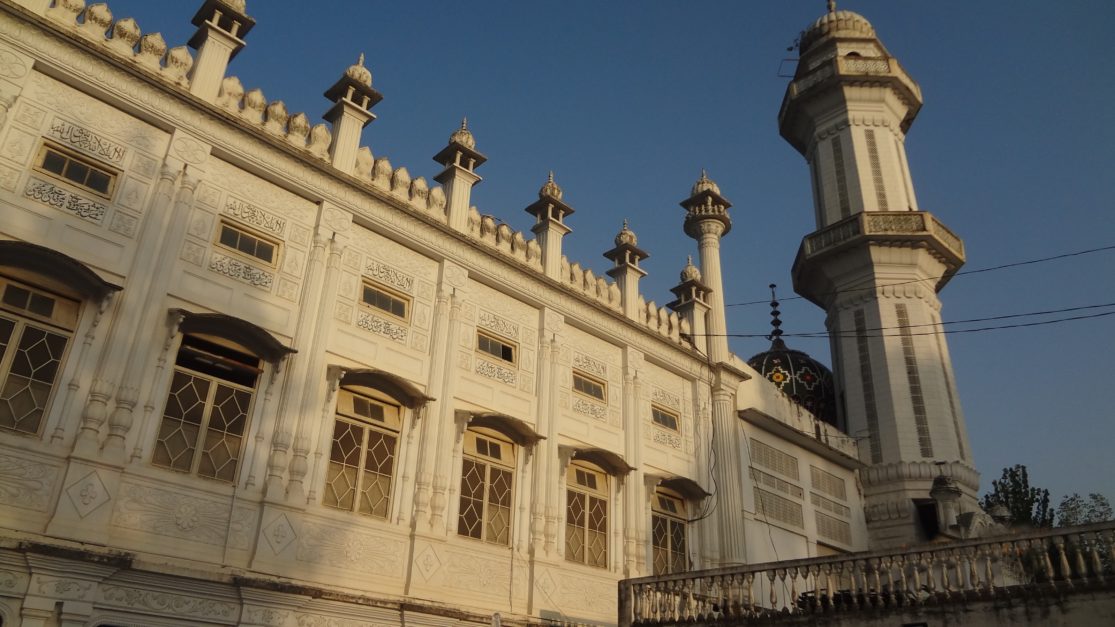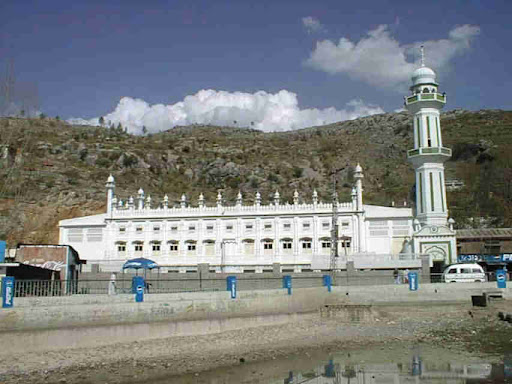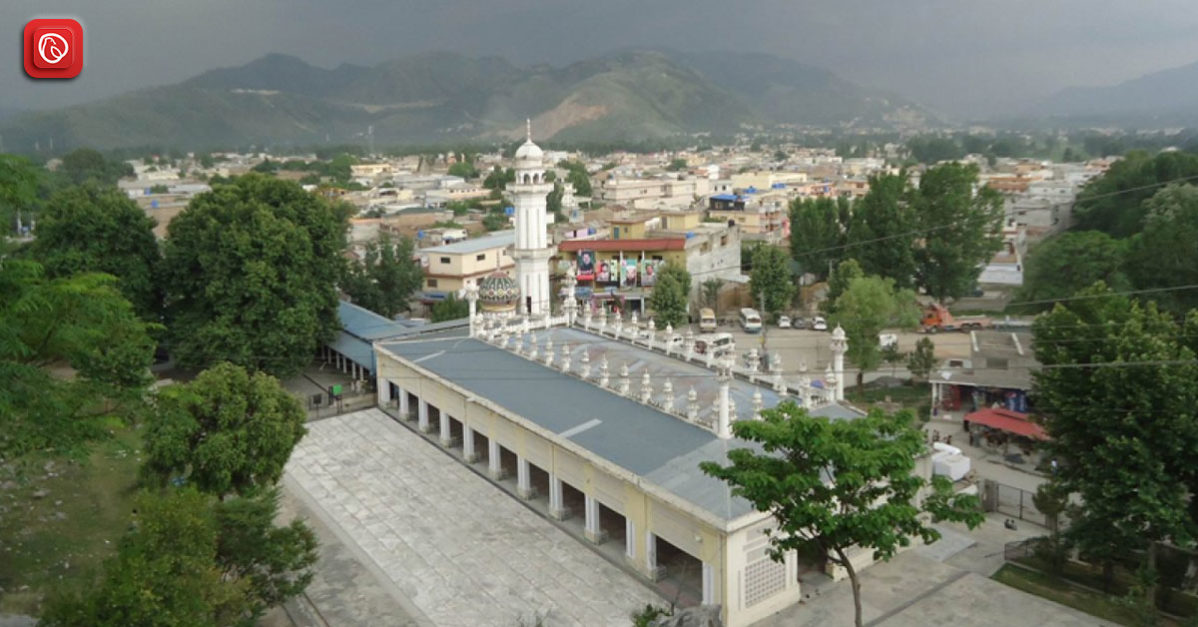Situated at the base of a hill with natural springs and shaded by a verdant region in the hamlet of Thandiani, within the NawanShahr neighbourhood of Abbottabad city, the Ilyasi Masjid has garnered global recognition. This location included a natural spring. Where Muslims wanted to build a mosque, Hindus wanted to erect a temple. For a while, there was conflict.
Conversely, the Jamia Masjid was finally founded by Muslims. Everyone made a faith-filled contribution. Due to the mosque’s excellent construction, it is now a great architectural masterpiece. Its walls, ceilings, and minarets provide the best views of Islamic art and culture.
Graana.com has discussed everything you need to know about Ilyasi Masjid, including its location, history and more.
Location
Situated atop Ilyasi Masjid Hill, Abbottabad’s Ilyasi Mosque is five kilometres away from Murree Road and six kilometres away from the main Bazar of the city. Ilyasi Mosque has a fountain, and the mosque uses its water for many purposes. Abbottabad has this fountain as a gift from God.
Moreover, you can enjoy hiking at the Ilyasi Mosque hill while you visit the Ilyasi Masjid. It is the ideal location for a picnic where you can spend time with your family.
History

Ilyasi mosque’s inheritance is over a long period of time as a carrier of the order that the Indian tradition represents. The existing monument is an 18th-century creation of emperor Shah Jahan with in-built expressions of architectural skills and cultural acceptance during the Mughal dynasty.
Construction of this mosque was completed by a wealthy Persian dignitary, Il’yashk Hotedzh, who worships Islam and often gives gifts to people. The mosque, which spread on the mount by the saying of Ibn Al-Foun, represented not only obedience to the belief but also diplomacy and peace with different exploits.
In summary, after being initiated into being a loving and pushing administrator of the Ilyasi Masjid, it became a platform where a person can receive the spiritual tranquillity that his or her soul derives from religious sermons, spiritual discussions, and social activities.
Additionally, each tourist wished to see the marble building facades and the towering minarets and domes flying by twice as much until he finally arrived at the most beautiful place all the locals and travellers usually have in visit- the Mosque.
Over the centuries, this city, Bab al-Qaeda, has been the witness and the crowd of the events represented in the world’s history (history), including victories and defeats during invasions, wars, and political instability.
However, it still presides over its status compared to classical works. It serves the ears as an obstacle—a symbol of durability and a persistent striving towards religious diversity in India. However, it is still effective as an open gathering place for Muslims who come, and it is an advertisement of the national cultures for the residential people for the time being.
Architecture

The architecture of Ilyasi Masjid is a mesmerizing fusion of Mughal and Persian styles, showcasing the ingenuity and craftsmanship of its builders. The mosque’s facade is adorned with intricate marble carvings featuring delicate floral motifs, geometric patterns, and calligraphic inscriptions from the Quran. The use of white marble adds to its aesthetic appeal and reflects the Mughal preference for grandeur and opulence in religious structures.
One of the most striking features of the Ilyasi Masjid is its majestic domes and minarets, which dominate the skyline of the surrounding area. The main dome, crowned with a pinnacle, serves as the focal point of the mosque and symbolizes the celestial realm in Islamic architecture. The minarets, with their towering height and graceful tapering, provide architectural balance and serve as vantage points for the call to prayer.
Moreover, inside the mosque, the prayer hall is spacious and airy, with rows of arches and pillars supporting the roof. The mihrab, a niche indicating the direction of Mecca, is intricately embellished with floral patterns and Quranic verses. The courtyard, surrounded by arched cloisters, offers a tranquil space for worshipers to gather and reflect. Overall, the architecture of Ilyasi Masjid is a testament to the artistic brilliance and spiritual significance of Islamic architecture in India.
Routes and Distance from Major Cities
Here’s the approximate distance from major cities to Abbottabad along with common routes:
Islamabad:
– Distance: Approximately 120 kilometers
– Route: The most common route is via the Islamabad-Murree Expressway and then continuing on the Murree-Abbottabad Road. This route offers scenic views and usually takes around 3 hours by car.
Lahore:
– Distance: Approximately 350 kilometers
– Route: The usual route is via the Lahore-Islamabad Motorway (M2) and then continuing on the Islamabad-Murree Expressway before taking the Murree-Abbottabad Road. This journey typically takes around 6 to 7 hours by car.
Karachi:
– Distance: Approximately 1,300 kilometres
– Route: The most common route is via the Karachi-Lahore Motorway (M-5) until reaching Lahore, then continuing on the Lahore-Islamabad Motorway (M2) before following the route mentioned above to Abbottabad. This journey is quite long and usually takes around 18 to 20 hours by car.
Peshawar:
– Distance: Approximately 150 kilometers
– Route: The typical route is via the Peshawar-Islamabad Motorway (M1) and then continuing on the Islamabad-Peshawar Motorway (M-1) before taking the Hasan Abdal-Havelian Expressway and finally the Abbottabad-Mansehra Road. This journey usually takes around 3 to 4 hours by car.
Rawalpindi:
– Distance: Approximately 110 kilometers
– Route: The common route is via the Islamabad-Murree Expressway, which continues on the Murree-Abbottabad Road. This journey typically takes around 2.5 to 3 hours by car.
Frequently Asked Questions (FAQs)
Here are 10 frequently asked questions (FAQs) about Ilyasi Masjid, along with their answers:
What is the history behind the Ilyasi Masjid?
Ilyasi Masjid was built in the 17th century during the Mughal era by a Persian nobleman named Ilyas Shah. It stands as a symbol of religious tolerance and architectural brilliance.
Where is Ilyasi Masjid located?
Ilyasi Masjid is located in Abbottabad, a city in the Khyber Pakhtunkhwa province of Pakistan.
What is the significance of the Ilyasi Masjid?
Ilyasi Masjid holds historical and cultural significance as a place of worship for the Muslim community in Abbottabad. It is also admired for its architectural beauty and intricate marble carvings.
Is Ilyasi Masjid open to visitors of all faiths?
Yes, Ilyasi Masjid is open to visitors of all faiths who wish to admire its architecture or observe Islamic religious practices respectfully.
What are the architectural features of Ilyasi Masjid?
Ilyasi Masjid features elegant domes, towering minarets, and intricate marble carvings with floral motifs and Quranic inscriptions. Its architecture reflects a blend of Mughal and Persian styles.
Are there any restrictions for visitors at Ilyasi Masjid?
While there are no strict restrictions, visitors should dress modestly and observe respectful behaviour while visiting the mosque.
Is photography allowed inside Ilyasi Masjid?
Photography is generally allowed inside Ilyasi Masjid, but visitors are advised to seek permission from mosque authorities before taking photographs, especially during prayer times.
Are there any nearby attractions to visit along with Ilyasi Masjid?
Yes, there are several nearby attractions in Abbottabad, including Shimla Hill, Ilyasi Dam, Harnoi, Thandiani, and Jinnahabad Buddha.
What are the visiting hours of Ilyasi Masjid?
Ilyasi Masjid is usually open for visitors during daylight hours. However, checking with the mosque authorities for specific visiting hours and any special events or prayer times is recommended.
Can tourists get tour guides of Ilyasi Masjid?
Formal guided tours may not be available. Visitors can often learn about the mosque’s history and significance from local guides or mosque staff. They are happy to provide information and answer questions.
For more related information, visit Graana Blog.




